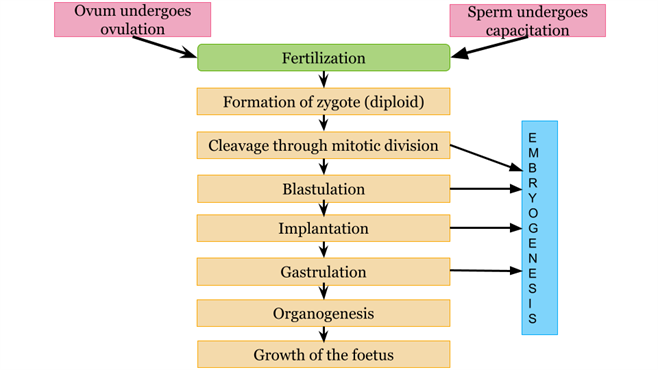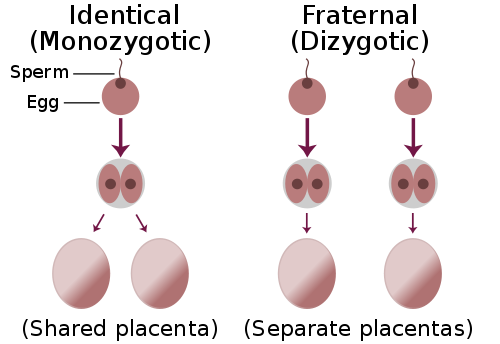PDF chapter test TRY NOW
Pregnancy or Gestation:
Gestation is the time period during which the embryo attains its development in the uterus.
Parturition:
The expulsion of the fully grown foetus from the mother's uterus at the end of gestation is called parturition.
It is the process of giving birth to a completely developed foetus. Parturition involves different processes that provide the driving force for the baby to come out. The signals for childbirth starts from the fully matured foetus and the placenta that induce the uterine contractions.
First, oxytocin from the posterior pituitary lobe stimulates the strong contractions of the uterine wall. Childbirth starts with a series of contractions of the uterine walls and muscles. Due to the contractions, the head of the baby gets pushed along the uterus.
Next, the cervix widens, which facilitates the expulsion of the baby. Thus, the baby is delivered from the mother’s womb along with the umbilical cord, causing birth. The uterus of the mother attains back to the normal size after the delivery of the baby.

The different phenomena involved in the formation of the embryo and its development
Lactation:
The process of milk production after childbirth from the mammary glands of the mother is called lactation.
The first fluid which is released from the mammary gland after childbirth is called the colostrum.
Colostrum is a yellow fluid that is rich in protein (mainly lactalbumin and lactoprotein) and contains antibodies that provide immunity to the newborn.
Important!
The milk produced from the breast during the first \(2\) to \(3\) days after childbirth is called colostrum. It contains antibodies that provide immunity to the newborn, which is essential for the body.
The below video represents parturition and lactation:
Formation of twins:
Generally, human beings produce one offspring. However, sometimes, the development of two embryos takes place. When two embryos are developed simultaneously, twins are born. The twins can be:
1. Identical twins
2. Fraternal twins
Identical twins:
Identical twins are also called monozygotic twins, as they develop from a single zygote. Two separate embryos are formed from the splitting of a single zygote. Since they originate from the same sperm and the ovum, they have the same sex and have identical characteristics.
Fraternal twins:
Fraternal twins are also called dizygotic twins. They are formed due to the fertilization of two different ova, fertilized by two different sperm. Fraternal twins may be of the same or different sex and have different characteristics.

Identical and fraternal twins
Reference:
https://commons.wikimedia.org/wiki/File:Identical-fraternal-sperm-egg.svg
https://www.youtube.com/watch?v=2RiwGPRb_Sw&t=167s
